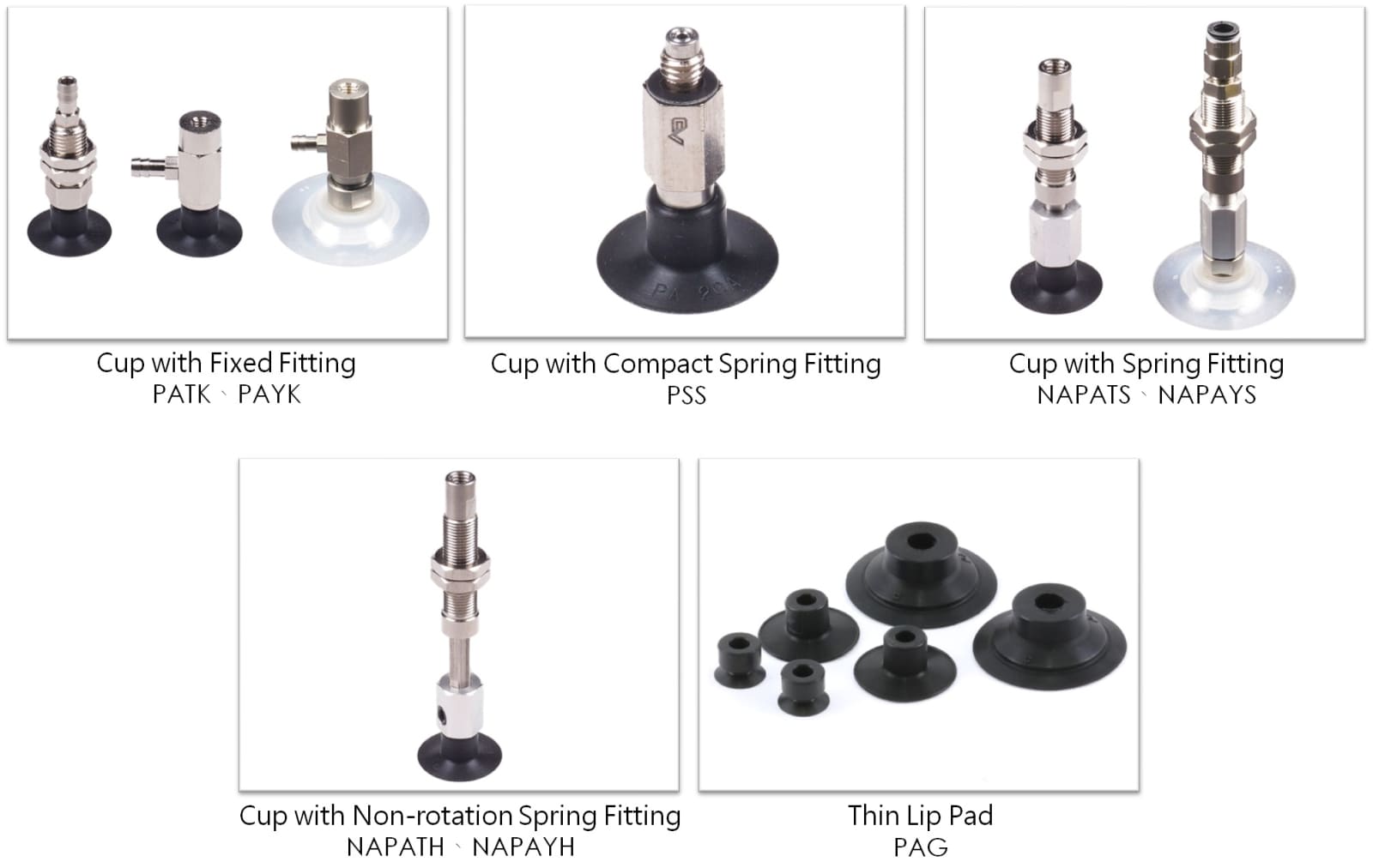

- All Products
- Pneumatic Series
- GENTLE Pneumatic Fittings
- GENTLE Ionizer
- CONVUM Ltd.
- FUJIKURA
- FUJI LATEX Co., Ltd.
- KOGANEI Corporation
- iB series
- Air Cylinders, Hands
- Air Valves
- Air Filters, Regulators, Pressure Gauges
- Flow Rate Sensor Switches, Plachain Ducts, Pressure Switches
- Vacuum Equipment, Pads
- Electric Actuator
- Environmental Hygiene Equipment
- Static Electricity Removal
- Fluororesin Products
- Fixed Discharge Pump
- Medium Control Equipment
- Pulse Blow Series
- NKE Corporation
- TAKEX
- Dispensing Series
- Thin Pad Geometry: A thin lip contact profile minimizes initial deformation on delicate work, reducing marking risk on films and papers.
- For Smooth/Deformable Surfaces: Optimized for paper, plastic films, and thin sheets—stable pickup with clean release.
- Broad Size Range: ø5 / 10 / 15 / 20 / 25 / 30 / 40 / 50 mm options to match contact area and payload needs.
- Material Options: Choose N (NBR), S (Silicone), F (FKM), NE (Conductive NBR), SE (Conductive Silicone) to address general use, clean handling, chemical/heat resistance, and ESD control.
- Stable at High Throughput: Fast seal initiation and quick lip recovery help shorten cycle time and improve pick success in SMT and electronics assembly.
- Applications: SMT pick-and-place, electronics handling, paper/label placement, film and packaging picks, printing/packaging lines, lightweight automation modules for flexible parts.

Q1: What workpieces are best suited for PA pads?
A: Smooth, easily deformable thin materials such as paper, plastic films, and thin sheets—where low marking and stable pickup are required.
Q2: What pad materials are available?
A: N (NBR) / S (Silicone) / F (FKM) / NE (Conductive NBR) / SE (Conductive Silicone) for general duty, clean handling, chemical/heat resistance, and ESD-sensitive processes.
Q3: How do I choose the right size?
A: Select ø5–50 mm based on effective contact area and load. For larger or more porous pieces, use a larger diameter to improve sealing and holding stability.
Q4: Will the thin lip leave marks?
A: The thin lip spreads contact pressure to reduce impressions. For highly delicate surfaces, choose S/SE (Silicone) to minimize marking.
Q5: Which material should I use for ESD-critical applications?
A: NE or SE pads provide conductive properties that help control surface potential and reduce ESD risks.
Q6: What about high temperature or chemical exposure?
A: F (FKM) is recommended for better heat and chemical resistance. Always verify media compatibility with a small trial.
Q7: Will these pads affect my line's cycle time?
A: The fast-start sealing and rapid lip recovery typically reduce cycle time. For ultra-short cycles, validate vacuum build time on your tool.
Q8: Can PA pads handle rough or porous surfaces?
A: PA is tuned for smooth surfaces. For porous/rough materials, consider thicker-lip or bellows-type pads to improve sealing.
Q9: How should I clean and maintain the pads?
A: Wipe with lint-free cloths and mild cleaners to remove dust/adhesives; avoid prolonged solvent soaking. Inspect lip wear/cracks and replace as needed.
Q10: Advantages over general cup-type pads?
A: The thin-lip geometry lowers deformation and marking on delicate work, enabling smoother pick-and-place and release—especially in SMT and labeling tasks.





